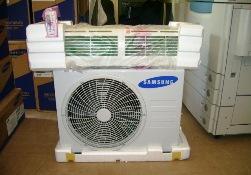Categories: Featured Articles » Sharing experience
Number of views: 15573
Comments on the article: 2
About the features of installing air conditioners
 Is it possible to install the air conditioner on my own? Undoubtedly possible, provided that the air conditioner is a monoblock design. And, here, installing in-house air conditioners, such as a split system or, moreover, a multi split system, given that they respectively consist of two or more units, is at least not practical.
Is it possible to install the air conditioner on my own? Undoubtedly possible, provided that the air conditioner is a monoblock design. And, here, installing in-house air conditioners, such as a split system or, moreover, a multi split system, given that they respectively consist of two or more units, is at least not practical.
The reason for 90% of breakdowns arising in them is precisely unprofessional installation. Repair is expensive.
If the air conditioner shows signs of malfunction, you will need to establish their cause. Prevention and maintenance services consist of a chain of procedures for cleaning and diagnosing indoor and outdoor units of a split system. They will show if air conditioning needs repair. It can only be performed by the master of a special service department, as repairing an air conditioner is not a simple matter.
Installation of air conditioners is also a very responsible matter and it should start with determining the location of the device. If the air conditioner is monoblock, it is easy to install it in a window opening with a slight slope outward for gravity removal of condensate.
Installation of air conditioners such as split systems is somewhat more complicated. The outdoor unit is installed on the front wall, balcony, in the loggia. The support is a special bracket. The indoor unit is mounted using the console included in the delivery to the wall, in the inter-ceiling space of the false ceiling or on the floor.
Of course, the air conditioner itself and the installation location are selected taking into account the volume of the room, its configuration and interior features. If necessary, a draft design is developed.
The indoor and outdoor units are switched among themselves through a hole pre-drilled in the wall. Since, in addition to the electric cable and copper pipes, a drainage pipe for condensate passes through it, the hole must also be drilled at a slope.
If the condensate is supposed to be diverted into the internal sewer, it will be necessary to ditch the wall for drainage under a slope. Required stroba and for the power cable from the switchboard to the air conditioner. Although, all communications can be laid open and - in decorative cable channel.
The standard installation of air conditioners, in which the distance between the units of the device does not exceed 5 m, is characterized by less laboriousness. At the same time, non-standard (with trunk lengths of more than 5 m) is also produced quite quickly and even in winter does not lead to excessive cooling of the room. Unless, often the system has to be refilled with refrigerant.
Any installation of air conditioners involves the steps of checking the system for leaks and reliability in accordance with the manufacturer's recommendations. Positive results of these checks are the basis for the full operation of the device.
See also at i.electricianexp.com
:
